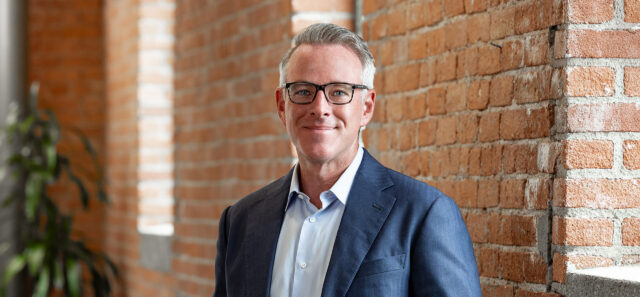LaBella’s Landscape Architecture Group is Growing!

LaBella’s Landscape Architecture group continues to expand and evolve, delivering innovative and impactful solutions for clients across the Northeast, Mid-Atlantic, and Southeast regions. The team, which includes experts in park and recreation design, urban planning, and residential landscape architecture, currently boasts 18 professionals, with plans to expand to more than 20 in 2025.
This growth includes the addition of Ryan Kelly, PLA, a seasoned professional with over 20 years of experience as a landscape architect. His portfolio spans luxury residential projects, social impact spaces, and nature-based solutions, making him a valuable asset to our team. We sat down with Ryan to discuss his new role and the group’s future direction.
How does your experience complement and expand LaBella’s existing landscape architecture services?
Before joining LaBella, I led RPK Landscape Architecture in Rochester, NY, where I focused on creating landscapes that enhance quality of life and support community and environmental well-being. My expertise in land use, zoning codes, adaptive reuse, restorative landscapes, and historic preservation enables me to solve complex challenges across projects of all scales. These areas of expertise complement LaBella’s diverse service offerings, helping us provide more comprehensive, customized solutions to our clients.
What makes LaBella’s Landscape Architecture team unique?
Our strength lies in our local presence and regional reach along the East Coast, which allows us to connect directly with communities, ensuring our designs reflect their unique character and needs. As our team grows, we’ve expanded our expertise in landscape architecture, arboriculture, horticulture, and parks and recreation. We also leverage LaBella’s multidisciplinary network to integrate services such as infrastructure planning, grant writing, and construction oversight, ensuring that every project is both innovative and achievable.
What landscape architecture trends are emerging in the municipal sector?
Municipal design is increasingly prioritizing community well-being and environmental sustainability. Trends include creating parks and recreation spaces that promote active lifestyles, encourage social connections, and foster inclusivity for diverse populations.
Climate resilience is a tremendous focus of landscape architecture right now. Tools such as green infrastructure and urban forestry are no longer just desirable but rather essential to addressing challenges like stormwater management, shoreline stabilization, and urban heat islands. These approaches reflect a growing recognition of the vital role public spaces play in improving environmental health and enhancing the overall quality of life in communities.
Are there any services the Landscape Architecture team is planning to add or expand in 2025?
In 2025, LaBella plans to increase its focus on funding solutions for municipal clients. Led by Michael Cocquyt, CPRP, Senior Program Manager, our team will assist municipalities in identifying and securing grants and other resources to bring their visions to life. Mike’s experience as a former municipal implementer gives us a unique insight into how municipalities execute their projects. This expanded focus aligns with our ongoing commitment to designing projects that are creative yet feasible for our clients.
What are some of the Landscape Architecture group’s long-term goals for municipal services?
The public space needs of our communities are constantly evolving, and our Landscape Architecture group is committed to staying ahead of these changes. Our long-term goals include designing creative, resilient, and sustainable solutions that are feasible to fund, construct, and deliver.
Beyond providing innovative designs (the “what”), we aim to support municipalities through every step of the process, including securing funding, navigating approvals, and overseeing construction (the “how”). By prioritizing functionality, beauty, and community impact, we strive to remain a trusted partner in shaping transformative public spaces for future generations.